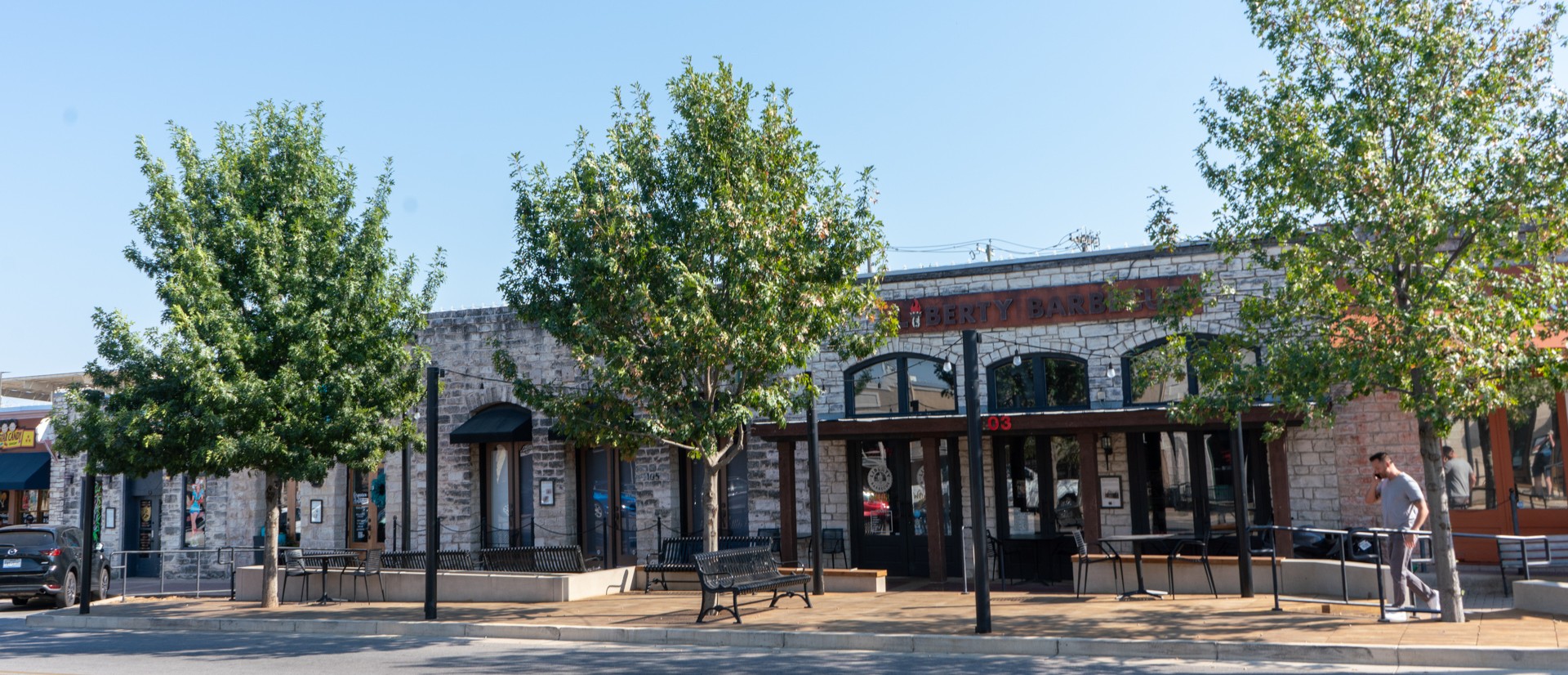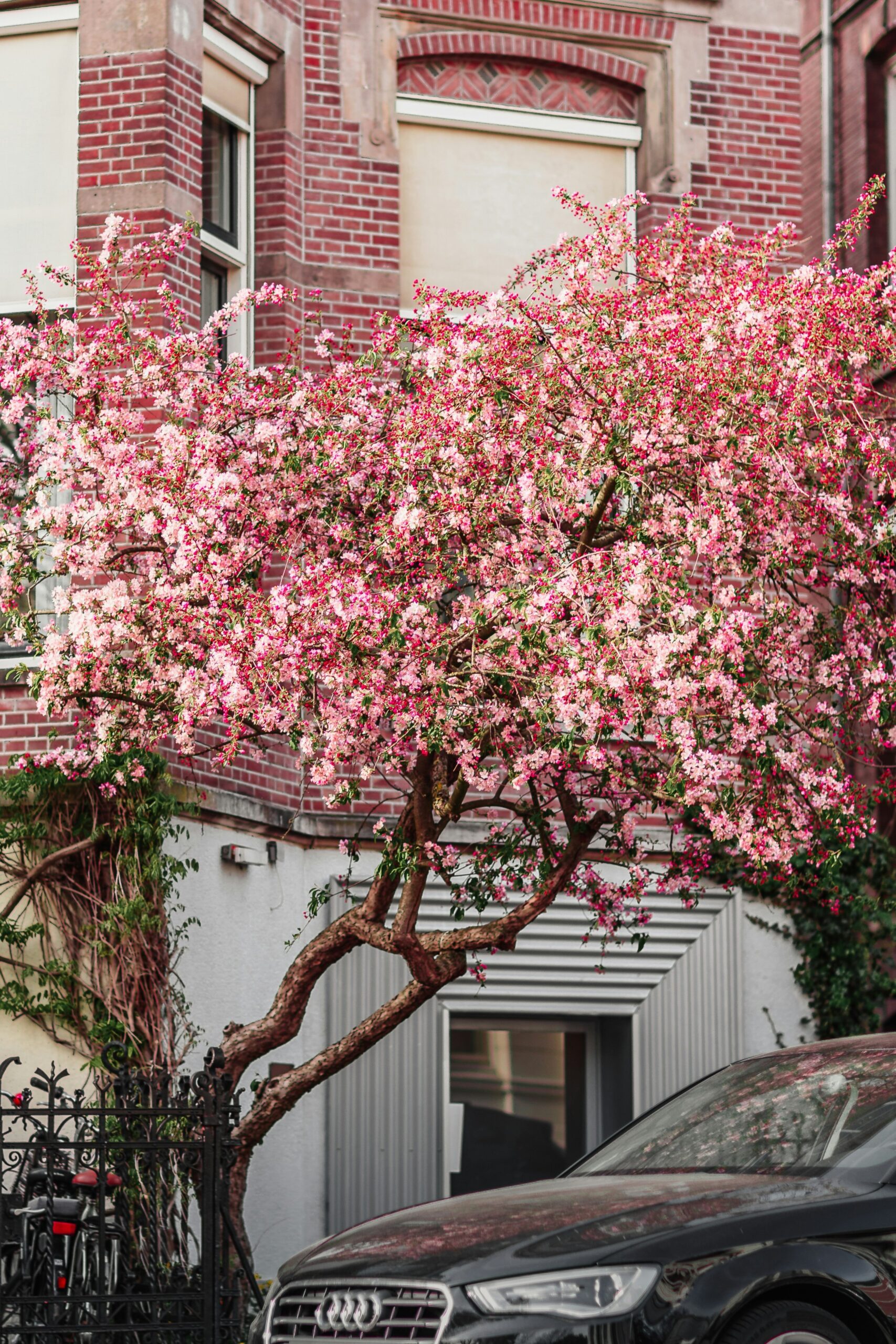Picture this: A landscape architecture firm has been awarded the bid for the landscape design of Main Street in the prominent metropolis of Big City, USA.
The city’s goal is to establish large-canopy urban trees that will line the streets for generations to come. The benefits are clear – from increased property values to cleaner air, not to mention aesthetic appeal.
Yet, experienced professionals know that achieving thriving trees in the harsh reality of urban areas is complex. Successful urban tree design requires more than aesthetic vision—it demands a practical, science-driven approach.
Creating a successful urban landscape is an art of anticipation. Long before the first tree takes root, landscape designers must carefully consider species, soil requirements, and tree placement— and accomplish all this within the limits of a project budget.
So where should you start?
This comprehensive three-part guide will walk you through the science and art of urban tree pit design. In our first section, we start from the ground up, covering:
- Strategic planning
- Preparation work
- Species selection
- Budgeting considerations
Stay tuned for parts 2 and 3, where we’ll get into the nitty gritty of location, layouts, achieving soil volumes, selecting soil, and long-term maintenance strategies.

RIGHT PLACE
Urban landscapes are complex, and finding the perfect spot for a tree requires careful analysis of both visible and hidden constraints. Start by assessing the available space.
Spatial Considerations:
- Vertical Space: Look up and around. Are overhead power lines, building overhangs/canopies, or existing structures going to interfere with the tree’s growth? All this considered, what size canopy can the space accommodate? Take into account the full canopy potential of your tree when mature.
- Underground Infrastructure: Utilities, sub-grade structures, light pole bases, and junction boxes may reduce space for roots. When not properly managed, roots can also damage nearby infrastructure. Conduct a thorough underground utility survey and use root management products to prevent future conflicts.
- Surrounding Environment: Proximity to buildings, existing trees, roads, and other urban elements will narrow down available space. Consider whether there is room for an open planting area to provide adequate soil volume. If not, soil cell systems will need to be used underground, to provide sufficient rooting space for the tree while supporting pavement.
Environmental Conditions:
- Sunlight Exposure: Different tree species have varying light requirements. Will the location provide adequate sunlight for healthy growth? Do surrounding buildings reflect a lot of harsh light or block light? Street lighting can also impact growth.
- Water Access: Assess the permeability of nearby surfaces. Trees surrounded by impervious surfaces may require an irrigation or aeration system to provide the needed nutrients.
- Traffic: Is the pavement near the tree going to support vehicle or pedestrian traffic? This could impact the tree’s root development unless a soil cell system is used to support the pavement.
These considerations will help inform tree species decisions as well. Think ahead about what a tree will look like and the requirements it will have when it’s mature.

RIGHT TREE
Careful tree selection is a crucial step to ensuring your urban forest thrives. Even the most sophisticated planting system can’t compensate for choosing the wrong tree species or poor-quality nursery stock. Make sure that trees you select are in line with the American Nursery Stock Standards. (View Here)
While the perfect tree may seem elusive, understanding your specific vision and priorities will guide you toward the ideal choice.
What is your vision? What is the purpose of the trees?
Think about the main reason the trees should be included on the project. Determining which of these functions is a priority will help narrow down species selection:

-
- Providing Shade
- Aesthetic enhancement
- Stormwater management
- Environmental benefits (air quality, temperature regulation etc)
- Ecological support (biodiversity, pollination)
- Energy Savings
- Food production
- Increasing property value
Appearance Attributes:
- Do you envision a tree with a showy Spring flower display or vibrant fall foliage?
- What shape of tree would align best with the space available – a more columnar tree or round or more spreading?
- Are appearances important to achieve the vision of the project?
- It’s still crucial to consider the practical implications of the species closely, even if the tree is purely for ornamental purposes. Regardless of the species’ potential, a tree that is improperly planted and becomes unhealthy will not have a pleasing appearance.
Tree types with showy spring or fall foliage include:
-
- Shantung Maple
- Thornless Honey Locust
- Gingko
- Crape Myrtles
- Eastern Redbud
- Crabapple Trees
- Katsura
- Japanese Tree Lilac
- American or European Hornbeam
- Chinese Fringe Tree
- Dogwood
- Cherry Blossom
Growth Characteristics:
- Growth Rate: How quickly do the trees need to mature?
- Mature Size: Ensure the tree’s expected height and spread align with available space.
- Longevity: Consider both the tree’s potential lifespan and the surrounding infrastructure’s lifespan. If the space is likely to be renovated and the trees replaced or removed within 20 years, then a 50 year species would be put to waste. If the trees are meant to be iconic heritage trees for generations, then it would be essential to select a long-lived species.

Northern Red Oak
Fast growing tree types include:
-
- Autumn Blaze Red Maple
- Heritage River Birch
- Paper Birch
- Northern Red Oak
- Pin Oak
- Willow Oak
- Dawn Redwood
- Lombardy Poplar Tree
- Quaking Aspen Tree
- Sargent Cherry
- Sun Valley Maple
Maintenance Requirements:
- Fruit/nut bearing trees:
- Trees that produce seed pods, nuts, flowers, or fruit will demand more cleanup and care than others.
- Be aware of the potential for fallen fruit or flowers to create slippery conditions or stain pavement, which could lead to liabilities.
- Fruit may also attract wildlife or insects.
- Plan for how the fruit will be picked and used.
- Available Resources:
- Take into account the number of personnel and amount of time that can be dedicated to the tree’s maintenance. Some tree species demand more pruning and care than others.

Environmental Adaptability:
- Drought and Flood Tolerance:
- Is your area is prone to droughts or floods? Reflected heat from buildings or pavement can also impact the tree.
- Salt resistance:
- See our guide on trees and road salt, which includes a list of salt-tolerant trees and other strategies to manage road salt. (View Here)
- Hardiness zone compatibility:
- Make sure the tree you select is adapted survive in your hardiness zone. There are many online resources available to find the hardiness zone of a tree species you have in mind.
- Pest and Disease Resistance
- Research the susceptibility of tree species to common local pests and diseases. Some trees are more naturally resistant to specific regional challenges like emerald ash borer, Dutch elm disease, or oak wilt. Consider consulting local arborists or agricultural extension offices for insights into prevalent threats in your area.
- Native Species Preference: Choose local species where possible, as they are typically best adapted to regional conditions and more likely to thrive.
Health, Safety, & Well-Being of the Public:
- Potential Allergen Considerations: from pollen or nuts. Also consider if the fruit bears poisonous leaves or fruit.
- Physical Safety: Avoid trees with thorns or potentially harmful characteristics to reduce liability risks.
- Aromas: Some trees may be more or less popular with the public because of the aroma they give off.
Other guides to help you select a tree:
- Tree Species Selection for Green Infrastructure – GreenBlue Urban
- Tree Species Soil Volume Guide – GreenBlue Urban
- The Few, The Proud, The Best Street Trees – Casey Trees
- Urban Tree Selection Guide – Casey Trees
- Badass Trees for Urban Areas – itrees

BUDGET PLANNING
Modern urban tree planting involves sophisticated infrastructure and careful implementation to ensure long-term success. While the initial costs might seem substantial, consider that:
- Quality over quantity: One properly planted tree with adequate soil volume and infrastructure support will provide more value than five trees planted with compromised growing conditions.
- How much does it cost to plant an urban tree today? The true cost of urban tree planting extends beyond the tree itself, encompassing soil systems (Read our blog on the cost of soil cell systems here), irrigation, protection, and ongoing maintenance. This will help you determine the number of trees your client can realistically afford.
- Long-term return on investment should factor into your planning. Healthy urban trees appreciate in value over time, providing increasing environmental, social, and economic benefits to their communities. Read our blog on Return on Investment here.
Successful urban tree planting combines practical understanding with creative vision. By carefully considering location, environmental conditions, tree characteristics, and long-term goals, you can create urban landscapes that are not just beautiful, but resilient and sustainable.
Stay tuned for parts 2 and 3 where we’ll dig deep into location, layouts, achieving soil volumes, selecting soil, and long-term maintenance strategies!

